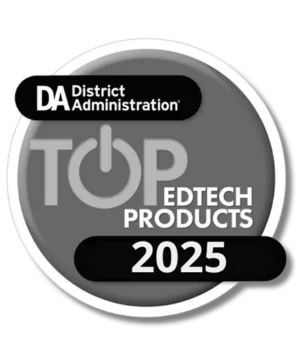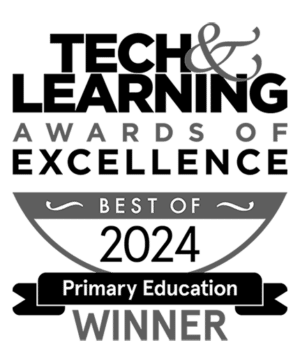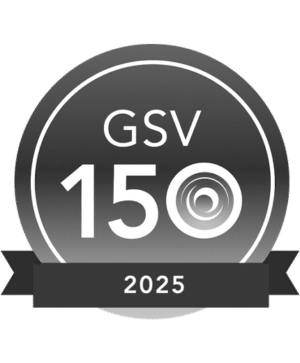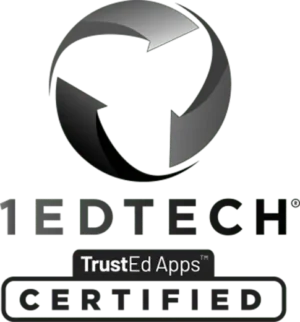
Cailin Minor is back with part 2 in her series on building a culture of collaboration at your school or district. Last week you established the skills, now learn how to inspire your teachers and some steps you can take to start building that culture!
Collaboration has power: power to move teaching, to impact students, and to grow an institution. Schools are more successful when they have people standing together, facing the same direction, and on a collaborative mission for excellence. Teachers are more powerful when they open their doors to others, seek out feedback, open their minds to new ideas, and work to outgrow themselves. This collective responsibility and cohesiveness has great impact on students.
In part 1 we established the knowledge and skills necessary to create and support a culture of collaboration for achieving school-wide goals. Coaches must now build on this foundation by first inspiring their teachers to work together towards this goal (the “why”) and then taking practical steps to achieve it (the “how”).
Working on the WHY: becoming vocal and transparent
When working with teachers on collaboration, we need to tap into this power and inspiration. Schools need to explore benefits that will get teachers to say, “Yes, this is important. This is going to make a difference to my students and for me.” That’s what will move a culture: inspiration and seeing success, not compliance.
We also need to address the idea that our attitudes, beliefs, and values affect culture, not just our actions or words. We know that some teachers more vocally express their concerns and doubts about collaboration, while others keep it to themselves. There might be teachers who show up to every meeting, participate, say their thoughts, and then walk out the door with the belief that it was a waste of their time. Some teachers might complete their mandatory classroom visits, fill out the reflection form, and not give it another thought or seek to have it impact their teaching. While these teachers are complying with all of the requirements of collaboration and are not actively against it, you get that sense that there’s no real excitement for the work, or that they don’t really believe in it. This has a huge impact on culture and the power of collaboration.
Starting the conversation on beliefs and values
While it’s hard to work with beliefs and values because they can be hidden, one thing coaches can do is address beliefs and values by having conversations around them. Talk to teachers about the “why” of collaboration: why is this important, what will the impact be, why this is exciting, why should you care, why is this a powerful thing, and so on. Discussing the why and allowing space for teachers to explore the why helps build values and beliefs around collaboration.
Another way to address this is to explore current beliefs and values, or to surface assumptions around collaboration. Fortunately, there are many great protocols that can help teams and schools do this work. One favorite is doing an “Assumption Wall” which gives teachers space to explore assumptions they have, why they might be true, and how these assumptions impact their thoughts and actions.
A third way coaches can build values and beliefs around collaboration is for teachers to experience it in successful ways. Teachers will start to believe in and value collaboration when they can see how it has a positive impact on their teaching, students, and professional relationships. Coaches can play a major role in orchestrating situations where teachers can experience success when it comes to collaborating.
Questions to promote reflection
As teachers experience success with collaboration, coaches can support them with reflecting on these experiences. By setting up time or posing reflective questions, we can help teachers make connections and shifts in their beliefs and values.
Here are a few examples of questions and sentence starters that promote reflection on beliefs and values:
- What might be the benefits of…?
- How has this impacted your teaching/practice/students?
- What long-range effects might this have?
- How might some of your beliefs/assumptions be influencing your thinking?
- Why is this important to you? How might this be important for students?
- What might be the impact of…?
- What might be the big picture goal?
Working on the HOW: building positive practice and actions
I recently finished a great collaborative work day with a group of grade-level teachers. The day was carefully crafted among the team members to include a comprehensive agenda with objectives, time guidelines, roles, and protocols. The team worked with coaches to discuss not only topics to cover but what we wanted to accomplish and how we were going to do that work. There was even time to reflect on the process and work.
The next day, I saw one of the teachers in the hallway as her kids were filing into the library. We didn’t have much time to talk so all she said was, “Yesterday just felt… good!” When you take your skills and knowledge of collaboration and work to create positive practices it just feels good! You not only get the feeling of accomplishment but that the ideas that came out of that collaborative work couldn’t have been possible without that group working together. This positive and successful feeling will support teachers in building up their beliefs around collaboration.
Ways to create collaboration
There are tons of tools coaches can use to help teachers find successful ways to collaborate. As mentioned earlier, collaboration isn’t just a given and we all need support in learning how to collaborate successfully.
Here is a quick overview of some collaborative practices that can have an impact on teaching and learning:
- Labsites: This is an interactive form of modeling where a coach goes to a classroom, models a lesson or teaching practice, and then the teachers get a chance to practice as well. Coaches and teachers come up with a common goal and then work on it together in the classroom with students.
- Lesson study: Teachers work together to plan a lesson and then one teacher teaches it while the others observe. Afterwards, all the teachers reflect on the lesson and discuss what went well and what adjustments they would make to the lesson plan.
- Walk-throughs/instructional rounds: Teachers can discuss a common goal or need, pose it as an inquiry (“How can we keep students engaged during lessons?”), and then walk through classrooms to observe each other and collect data. You can set this up so teachers are walking through classrooms many times so the data is not so specific to one teacher or one lesson.
- Make & take: Teams work together to share resources and create tools that will support their teaching.
- Data dialogue/analyzing student work: Teams work together to look at student data or analyze student work. Teams can use this collaborative data work to inquire into teachers who are experiencing success (e.g., “What are you doing that is making your students so successful with this?”). It can also provide an outside eye on tough situations (e.g., “I’m struggling to figure out why this student isn’t growing”). Teachers can share ideas and strategies as they use the data to plan for instruction.
- Cycles of collaboration: Teams can work through a cycle, usually across a longer period of time or a unit, where they engage in collaborative work that focuses on student learning. A cycle might look like this:
- Analyze data: pre-assessments
- Set goals as a team: student goal and professional goal on teaching practices
- Engage in professional learning around the goals
- Implement new learning and practices
- Monitor, assess, and adjust practice
- Analyze the summative assessment and reflect
As teachers engage in collaborative practices, coaches can also work with teachers in some key ways to help make these experiences successful:
- Make sure collaboration has a purpose: Sometimes we end up collaborating for the sake of collaborating. A coach or team member might say, “Hey, let’s all do a lesson study!” but people aren’t sure why they are doing it besides lessons studies are a good collaborative practice. Even a great collaborative practice can fall short if the purpose is not understand or it is not in service of larger goals. So before teams or coaches start randomly choosing collaborative practices, start with the goal. What is a need we have with students? How can we tackle this need together? Then choose a collaborative practice that will support this goal and need.
- Help teams with protocols: Coaches can help teams find protocols for how they want to do the work and meet their objectives.
- Facilitate collaborative work: It can be powerful for teams to have someone facilitate the work they want to do. For example, it is hard to facilitate a conversation around data and also participate with your own insights and class data.
- Co-planning collaborative work: Like I mentioned before, coaches can work with teams to plan and set up collaborative work for teachers.
Final thought: define what success looks like for your school
Collaboration is a buzzword we all use now and culture is often something that’s tough to put our finger on. Knowing this, it’s important for schools to take time to figure out what a culture of collaboration will look like at their school—it’s not going to be the same for everyone.
Schools can work to lay out their vision and what success will look like so they know where they are going and what it will look like when they get there. Some questions to think about might be:
- What do we want our culture of collaboration to be?
- What will it look like/sound like/feel like?
- What will we see teachers doing/saying if we have a culture of collaboration?
Answering questions like these will help guide schools to build the what, why, and how of collaboration.
About Our Guest Blogger
Cailin Minor is a literacy coach at Shanghai American School. She has been teaching overseas for the past 11 years in Korea, Thailand, Colombia, and China. She loves international education and the challenging and rewarding work of coaching.
Be sure to check out her blog where she explores tips, tools, and thoughts on instructional coaching, and follow her on twitter @cailinminor.
Stay Connected
News, articles, and tips for meeting your district’s goals—delivered to your inbox.












